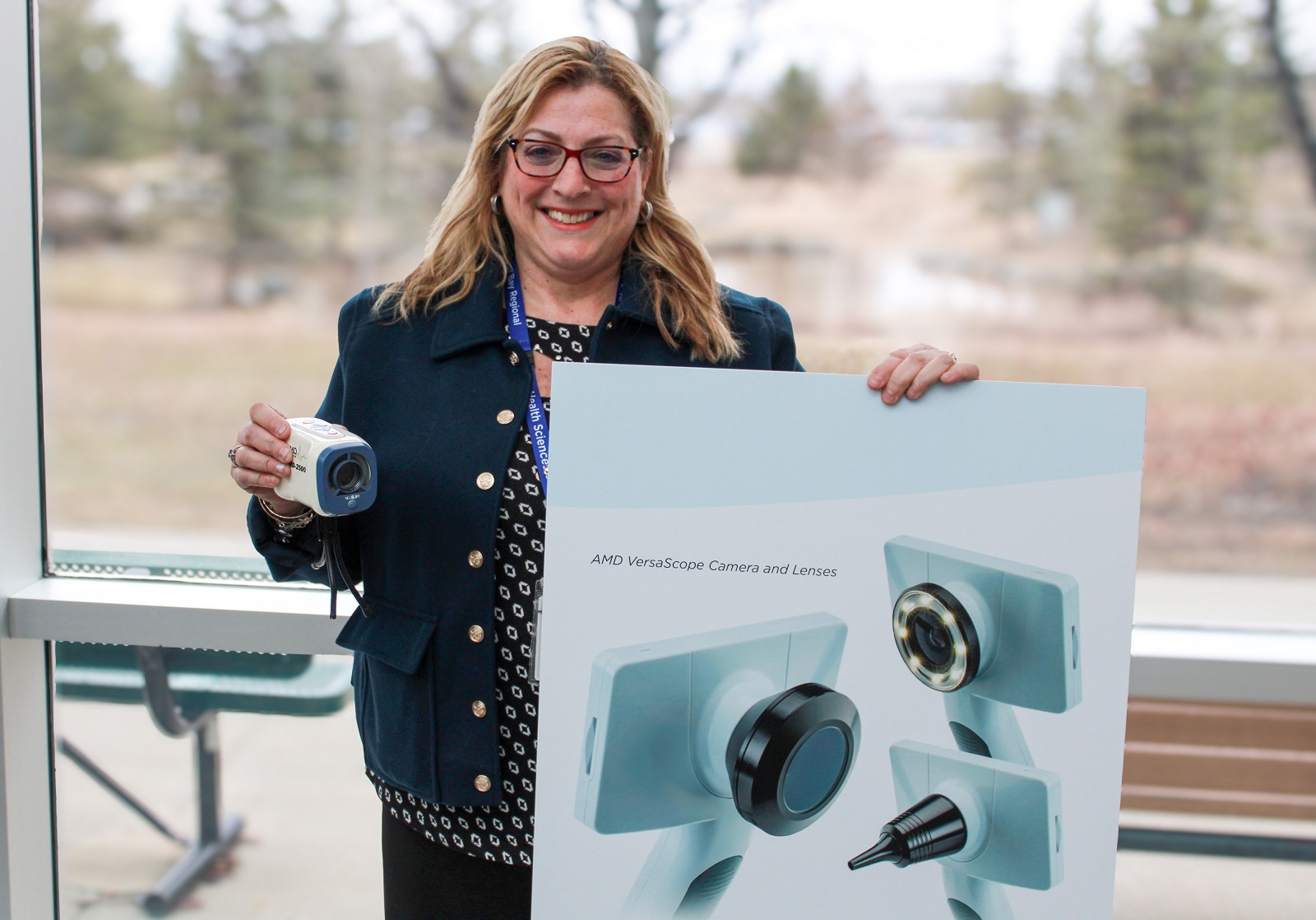Family CARE Grant Telemedicine Camera Reduces Travel for Many Medical Appointments
Published Tuesday, June 3, 2025

Dianne DaSilva, Telemedicine Support Specialist for the Ontario Telemedicine Network (OTN) at the Hospital, with the older Versascope Camera (left) and a preview of the new unit (right).
Every year, Telemedicine saves thousands of patients the time, expense, and worry of travelling elsewhere to see a specialist. This videoconferencing system allows patients in Northwestern Ontario to get virtual consults from southern Ontario and elsewhere without leaving their community.
Approximately 575 of the 12,300+ patient appointments every year may benefit from a special examination camera to zoom in on certain parts of the body like the skin and inside the mouth. However, the medical camera used to do this imaging was aging and due for an upgrade in technology for better patient care.
Thanks to your support of the Family CARE Grant program, the Telemedicine Department at the Thunder Bay Regional Health Sciences Centre has a new medical camera for Telemedicine appointments. Not only is the Versascope newer and more reliable, it uses advanced features such as “true colour” imaging (important for specialties such as dermatology), three built-in cameras, touchscreen controls, and autofocus.
“The new camera will save those patients in Thunder Bay from having to travel for a consult,” said Dianne DaSilva, Telemedicine Support Specialist for the Ontario Telemedicine Network (OTN) at the Hospital. “There is also the possibility that more out-of-town specialists will book appointments with their Thunder Bay patients through OTN, now that we have a better, more reliable camera.”
Most of us are familiar with technologies like Zoom and FaceTime, which allow face-to-face conversations. Videoconferenced medical appointments can save patients and caregivers thousands of dollars in air flights, hotel rooms, meals, and lost work.
“Patients can see specialists virtually, like a Zoom session,” DaSilva said. “It's almost exactly like having a person-to-person consult, except you don't need to travel all the way to Toronto for a 15-minute appointment.”
However, some appointments require a visual examination. That's where the Versascope camera comes in. Nurses here with the patient use the camera to allow the specialist on the other side to see problem areas. The Versascope can be used to closely examine the skin for dermatology patients and burn patients, examine wounds, and view the mouth and throat.
The camera can even be used to observe neurological patients. For example, the specialist may want to observe tremors in a patient with Parkinson's disease. The old camera did not have the definition needed to see slight tremors. The new camera gives the specialist a clearer view – and clearer understanding of the patient's symptoms.
Patients in the region who would have needed to fly to Toronto via Thunder Bay can now use the Telemedicine suites at the Health Sciences Centre, too.
Kelly Keeler, Manager of the Telemedicine Department at the Hospital, said that the older, aging technology was getting in the way of patient care. The new technology will allow the Telemedicine
Department to work more closely with specialists across the province to provide better, faster patient care.
“I think if we can get the word out that we have improved the technology on our end, specialists may be more likely to use the OTN system for medical appointments,” Keeler said.
This is one example of how your support of the Family CARE Grant Program helps improve patient care every day. Closer-to-home consults via Telemedicine save patients the anxiety and expense of travelling days for a 15-minute appointment.
See what other projects you funded through your donation to the Family CARE Grant Program: healthsciencesfoundation.ca/familycare
Article by Graham Strong